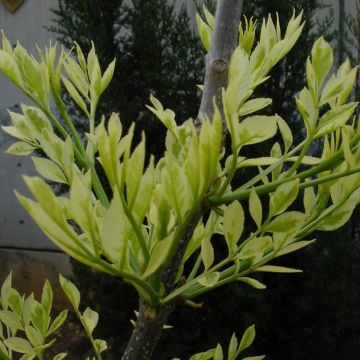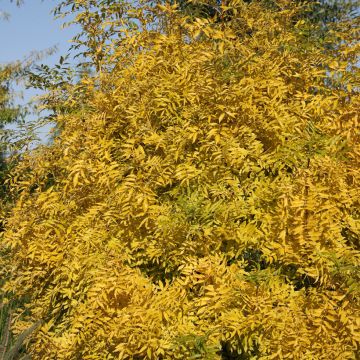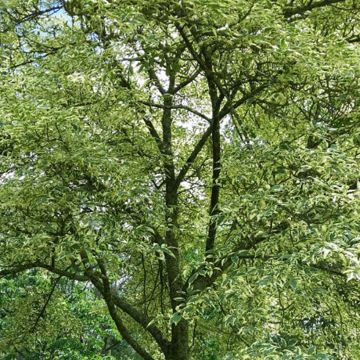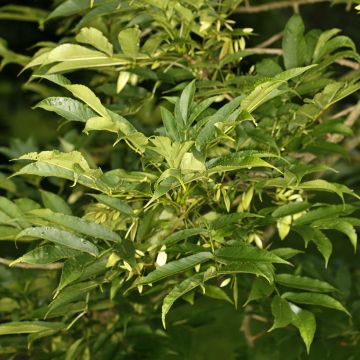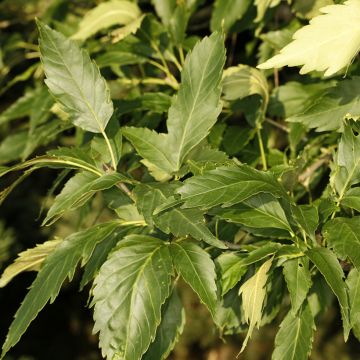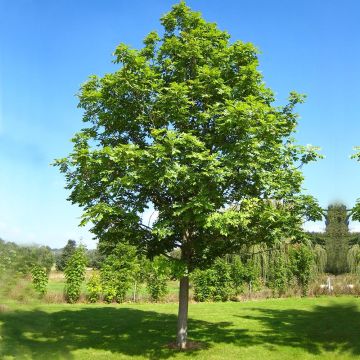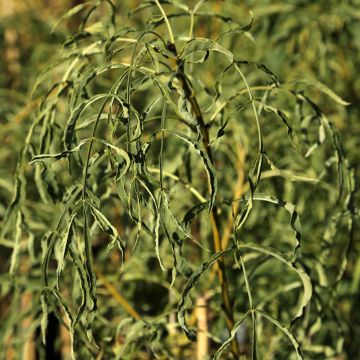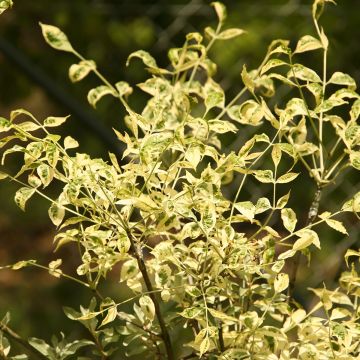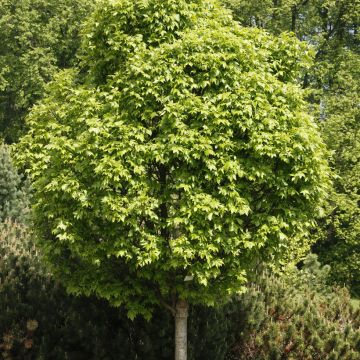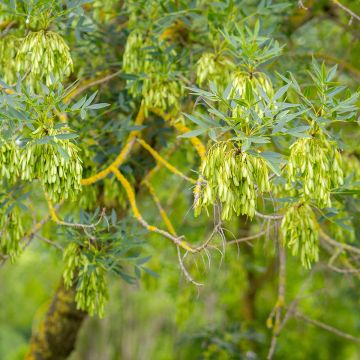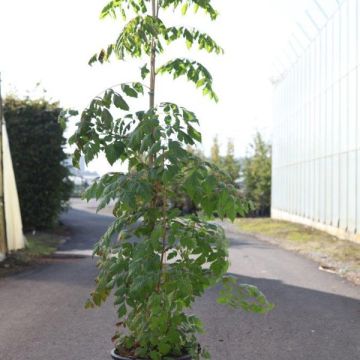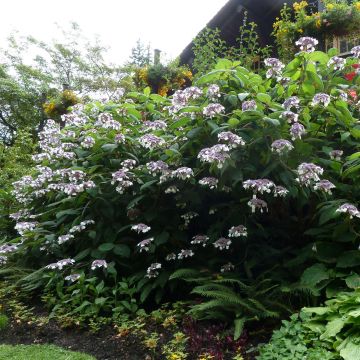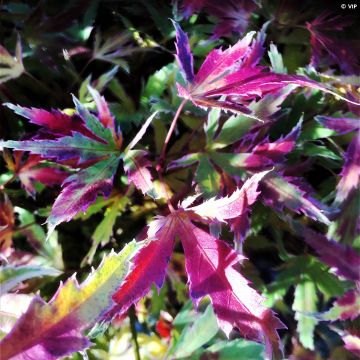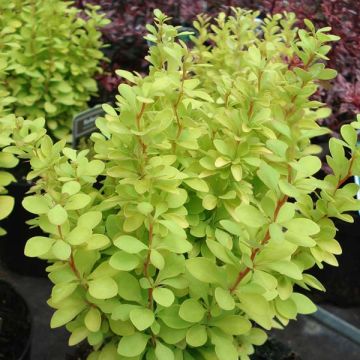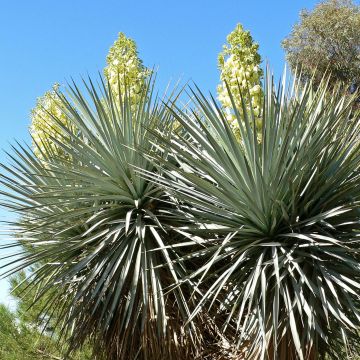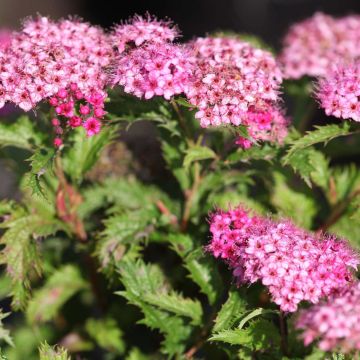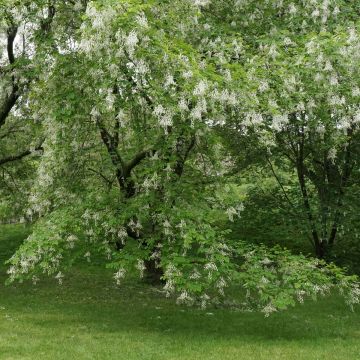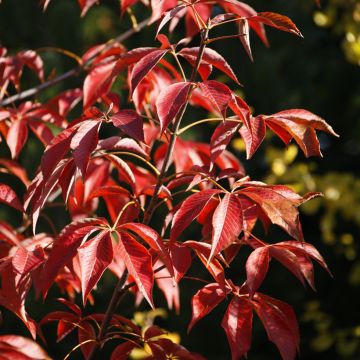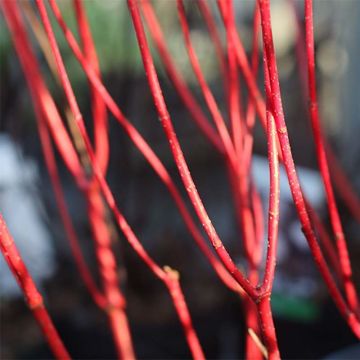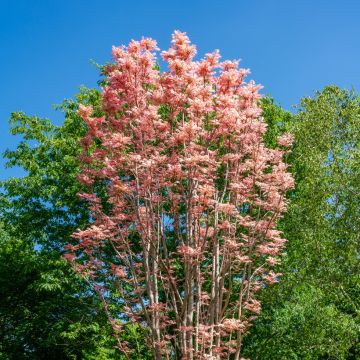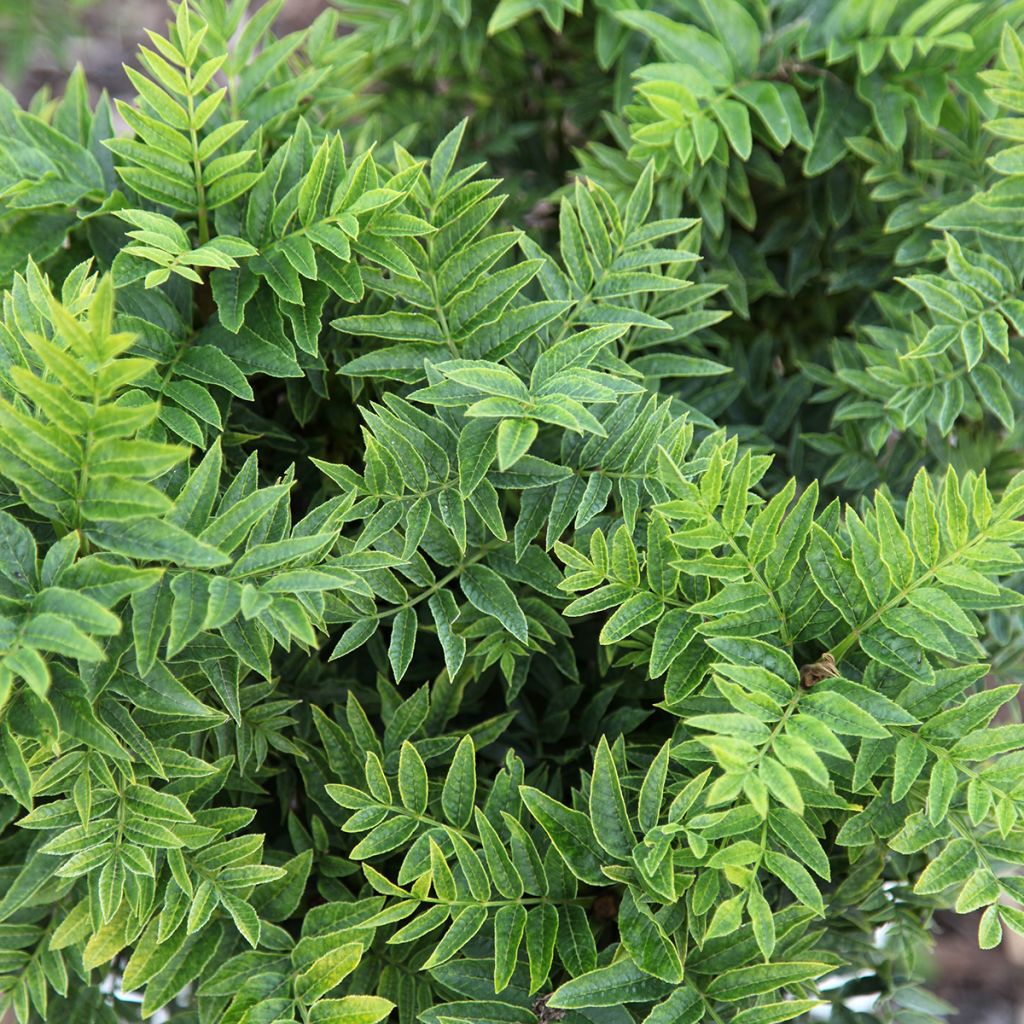

Fraxinus excelsior Abiona
Fraxinus excelsior Abiona
Fraxinus excelsior Abiona
European Ash, Common Ash
This item cannot be shipped to the selected country
Delivery charge from €5.90
More information
Schedule delivery date,
and select date in basket
This plant carries a 24 months recovery warranty
More information
We guarantee the quality of our plants for a full growing cycle, and will replace at our expense any plant that fails to recover under normal climatic and planting conditions.
From €5.90 for pickup delivery and €6.90 for home delivery
Express home delivery from €8.90.
Does this plant fit my garden?
Set up your Plantfit profile →
Description
Fraxinus excelsior Abiona is a dwarf variety of common ash or tall ash. Much smaller than the common ash, this variety does not exceed 1m in height at maturity. It forms a straight and compact miniature tree with an erect pyramidal habit. Its lateral branches are stout and thick, and its new leaves are initially light green before darkening in summer. Insignificant yellow-red panicles of flowers appear in April-May. In autumn, the leaves turn bright yellow, while winged fruits also adorn the bush. This dwarf ash changes several times throughout the seasons, creating animation on a small scale. Undemanding, it can be planted in the garden or in a pot.
Fraxinus excelsior, commonly known as the common ash or tall ash, is a tree of the olive family, just like the olive tree, jasmine, privet, or lilac. It is mainly found in Europe, Scandinavia, and Russia, where it is present on riverbanks, as well as in forests. It can reach a height of 20 to 30 metres and live up to 150 to 200 years. Its trunk is generally straight and its crown elongated.
The Abiona variety has all the characteristics of a tree in silhouette, in miniature form. Erect, straight, pyramidal, its dimensions are very compact, reaching 1m in height and 70 to 80cm in width at maturity. The spring flowering occurs in April-May in yellow-red panicles of flowers. The thick branches are greenish-grey and rigid, and the leaves are pinnate, composed of 7 to 13 leaflets, elliptical and pointed at the tip. In spring, the leaves emerge in light green and gradually darken to dark green, creating a contrast of colours until summer. Then, in autumn, they turn bright yellow, accompanied by decorative winged fruits, samaras, which remain attached to the tree for a long time.
The Abiona common ash can be planted in any garden, as well as on a terrace. It brings the silhouette of a tree in miniature form. You can even have fun creating a miniature garden around it. It enlivens the garden with its numerous seasonal stages. It is robust and resistant to winter cold to -20°C. It tolerates different soils, slightly acidic to alkaline, well-drained, rich, and moist. It prefers full sun but can tolerate some shade. It is sensitive to extreme conditions: waterlogged or muddy soil where water stagnates, as well as drought and scorching sun in high heat. Whether in a pot or in the ground, its bare deciduous branches in winter remain decorative, and throughout the rest of the year, its changing foliage, flowers, and fruits attract attention. Pair it with shrubs of different sizes with evergreen and deciduous foliage, such as dwarf conifers and flowering shrubs with small perennials at their base.
Report an error about the product description
Fraxinus excelsior Abiona in pictures
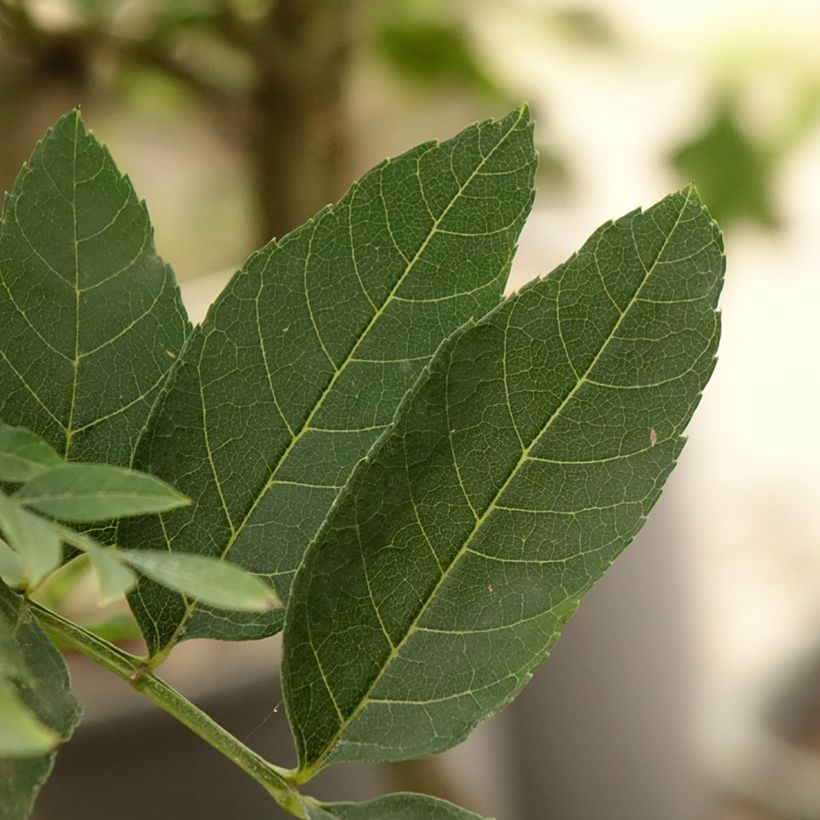

Plant habit
Flowering
Foliage
Safety measures
Botanical data
Fraxinus
excelsior
Abiona
Oleaceae
European Ash, Common Ash
Cultivar or hybrid
atteinterespiratoire
Cette plante peut entraîner des symptômes allergiques.
Evitez de la planter si vous ou vos proches souffrez de rhinite saisonnière ("rhume des foins").
Davantage d'informations sur https://plantes-risque.info
Other Fraxinus - Ash tree
Planting and care
Plant your Fraxinus excelsior Abiona in autumn or spring, choose a location in the non-scorching sun, where the soil is deep enough. If necessary, add drainage if your soil is suffocating. If your soil is poor, adding leaf compost will be beneficial. Maintain regular watering during the summer following planting and make sure to protect it from prolonged droughts for another year, mulching can help keep the base moist and space out watering. It is important to keep in mind that this tree needs consistently moist soil. It is perfectly frost-resistant.
Planting period
Intended location
Care
This item has not been reviewed yet - be the first to leave a review about it.
Striking foliage shrubs
Haven't found what you were looking for?
Hardiness is the lowest winter temperature a plant can endure without suffering serious damage or even dying. However, hardiness is affected by location (a sheltered area, such as a patio), protection (winter cover) and soil type (hardiness is improved by well-drained soil).

Photo Sharing Terms & Conditions
In order to encourage gardeners to interact and share their experiences, Promesse de fleurs offers various media enabling content to be uploaded onto its Site - in particular via the ‘Photo sharing’ module.
The User agrees to refrain from:
- Posting any content that is illegal, prejudicial, insulting, racist, inciteful to hatred, revisionist, contrary to public decency, that infringes on privacy or on the privacy rights of third parties, in particular the publicity rights of persons and goods, intellectual property rights, or the right to privacy.
- Submitting content on behalf of a third party;
- Impersonate the identity of a third party and/or publish any personal information about a third party;
In general, the User undertakes to refrain from any unethical behaviour.
All Content (in particular text, comments, files, images, photos, videos, creative works, etc.), which may be subject to property or intellectual property rights, image or other private rights, shall remain the property of the User, subject to the limited rights granted by the terms of the licence granted by Promesse de fleurs as stated below. Users are at liberty to publish or not to publish such Content on the Site, notably via the ‘Photo Sharing’ facility, and accept that this Content shall be made public and freely accessible, notably on the Internet.
Users further acknowledge, undertake to have ,and guarantee that they hold all necessary rights and permissions to publish such material on the Site, in particular with regard to the legislation in force pertaining to any privacy, property, intellectual property, image, or contractual rights, or rights of any other nature. By publishing such Content on the Site, Users acknowledge accepting full liability as publishers of the Content within the meaning of the law, and grant Promesse de fleurs, free of charge, an inclusive, worldwide licence for the said Content for the entire duration of its publication, including all reproduction, representation, up/downloading, displaying, performing, transmission, and storage rights.
Users also grant permission for their name to be linked to the Content and accept that this link may not always be made available.
By engaging in posting material, Users consent to their Content becoming automatically accessible on the Internet, in particular on other sites and/or blogs and/or web pages of the Promesse de fleurs site, including in particular social pages and the Promesse de fleurs catalogue.
Users may secure the removal of entrusted content free of charge by issuing a simple request via our contact form.
The flowering period indicated on our website applies to countries and regions located in USDA zone 8 (France, the United Kingdom, Ireland, the Netherlands, etc.)
It will vary according to where you live:
- In zones 9 to 10 (Italy, Spain, Greece, etc.), flowering will occur about 2 to 4 weeks earlier.
- In zones 6 to 7 (Germany, Poland, Slovenia, and lower mountainous regions), flowering will be delayed by 2 to 3 weeks.
- In zone 5 (Central Europe, Scandinavia), blooming will be delayed by 3 to 5 weeks.
In temperate climates, pruning of spring-flowering shrubs (forsythia, spireas, etc.) should be done just after flowering.
Pruning of summer-flowering shrubs (Indian Lilac, Perovskia, etc.) can be done in winter or spring.
In cold regions as well as with frost-sensitive plants, avoid pruning too early when severe frosts may still occur.
The planting period indicated on our website applies to countries and regions located in USDA zone 8 (France, United Kingdom, Ireland, Netherlands).
It will vary according to where you live:
- In Mediterranean zones (Marseille, Madrid, Milan, etc.), autumn and winter are the best planting periods.
- In continental zones (Strasbourg, Munich, Vienna, etc.), delay planting by 2 to 3 weeks in spring and bring it forward by 2 to 4 weeks in autumn.
- In mountainous regions (the Alps, Pyrenees, Carpathians, etc.), it is best to plant in late spring (May-June) or late summer (August-September).
The harvesting period indicated on our website applies to countries and regions in USDA zone 8 (France, England, Ireland, the Netherlands).
In colder areas (Scandinavia, Poland, Austria...) fruit and vegetable harvests are likely to be delayed by 3-4 weeks.
In warmer areas (Italy, Spain, Greece, etc.), harvesting will probably take place earlier, depending on weather conditions.
The sowing periods indicated on our website apply to countries and regions within USDA Zone 8 (France, UK, Ireland, Netherlands).
In colder areas (Scandinavia, Poland, Austria...), delay any outdoor sowing by 3-4 weeks, or sow under glass.
In warmer climes (Italy, Spain, Greece, etc.), bring outdoor sowing forward by a few weeks.

































